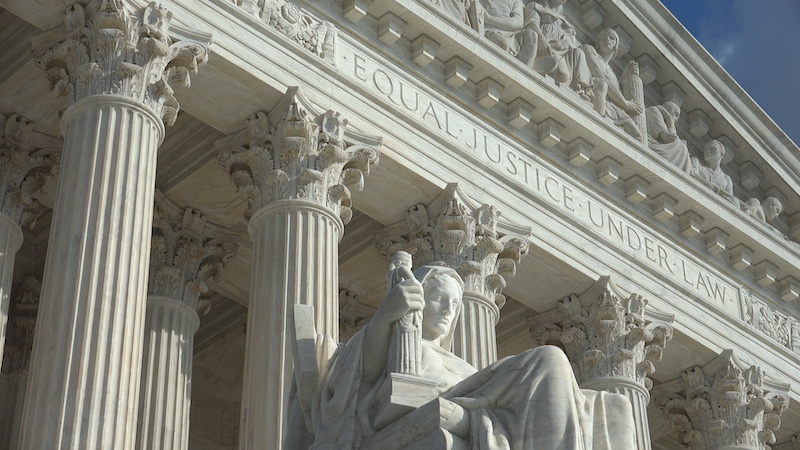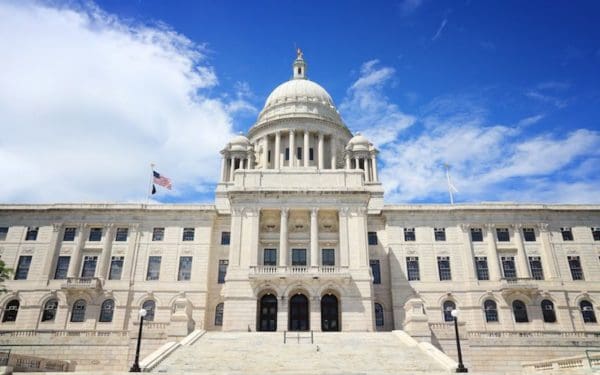
The Loper Bright and Relentless cases heard before the Supreme Court in January 2024 could render a decision with far-reaching consequences.
In the early days of 2024, the U.S. Supreme Court heard oral arguments in two cases that, on their face, seemed a simple matter of fishing. However, the cases Loper Bright Enterprises v. Raimondo and Relentless Inc. v. Department of Commerce were about much more than the narrow question of whether the government can require commercial fishing companies to help pay for federal observers on their boats.
These two cases – argued before the court on January 17th – could potentially upend 40 years of administrative law. Should the Supreme Court overturn a key doctrine known as the Chevron deference standard, it could completely rewrite the balance of power between federal courts and agencies. The result could profoundly reshape life for the rest of us, from the safety of our drugs to the purity of our water. For that reason, CLF and environmental groups like us have been following the case closely.
The Chevron deference standard was established in the 1984 Court case Chevron v. Natural Resources Defense Council. The doctrine lays out a simple premise with a sound basis of reasoning: When Congress writes an ambiguous statute or fails to write a law addressing all aspects of a matter, a federal agency can reasonably interpret that statute to create specific rules.
This standard has been the rule of the land for decades – under both conservative and liberal administrations – providing the basis for the rules we’ve all come to rely on. It is based on the common-sense notion that specialized agencies are best positioned to cultivate and apply the expertise needed to set policy in all sorts of complex, technical sectors. These include the environment, health, labor, banking, technology and more. This reasoning has helped federal agencies like the Consumer Protection Agency create policies preventing deceptive or unfair business practices. It has allowed the Labor Department to craft regulations guaranteeing overtime pay, tipped wages, or prohibiting discrimination. It allows the FDA to issue regulations to ensure the purity of our food and drugs and, of course, the EPA to protect the quality of our air and water. The standard also could be instrumental in giving federal agencies the space to regulate emerging and evolving areas, like social media, the internet, and artificial intelligence.
The basic thinking: under our Constitution, Congress is charged with passing laws that federal agencies are then responsible for administering. As policy experts with a long history of monitoring and regulating in an area, agencies should be able to set rules and standards without being second-guessed by Congress or an inexpert judiciary.
Now, this long-standing doctrine has been called into question. If overturned, we may end up with vastly weakened federal agencies disempowered to protect Americans against powerful corporate interests that act not on behalf of the public but for their own profit.
Chipping Away at the Administrative State
The facts of the case revolve around whether the National Marine Fisheries Service (NMSFS), under federal fisheries laws, can compel commercial fishers to help pay for onboard monitors to prevent overfishing. (CLF has filed amicus briefs in the cases supporting the agency’s regulation.) The Fisheries Service implemented this regulation based on its interpretation of its authority under the Magnuson-Stevens Fisheries Act. From the standpoint of those advocating to see the Chevron standard abandoned, federal agencies wield too much power, and courts shouldn’t defer to their reading of unclear statutory language when it is challenged. To make matters worse, in their view, agency interpretations can shift direction depending on which administration is in power, introducing inconsistency in our laws and policies.
On the other side stand those who believe that federal regulations are critical to ensuring the most basic protections that help our democracy work and keep Americans safe and healthy. No one is in a better position to design the rules than the experts at federal agencies. Their regulations are the bulwark against unregulated financial and insurance markets, unregulated industry and manufacturing, unregulated workplaces, consumer products, and transportation. We’ve seen it before. The unregulated state is precisely the one that inspired Upton Sinclair’s The Jungle, published in 1905, exposing the gruesomeness of America’s slaughterhouses at the turn of the century. That book spurred the creation of the modern regulatory state. Even as recently as 1969, the country suffered when manufacturing companies were free to dump toxic and flammable substances into rivers to the point where rivers (like Cuyahoga River in Ohio) caught fire. The EPA was born in 1970 as a direct result.
It’s worth noting that the plaintiffs in Loper Bright and Relentless were New Jersey and Rhode Island commercial fishing companies. But their lawyers were funded by wealthy arch-conservative groups and billionaire industrialists who have long sought to end regulations that they believe are coming from a “bloated,” overreaching government. (In other eyes, a government that prioritizes public welfare over corporate profits.)
Three Scenarios for the Future of the Chevron Deference
It’s impossible to know precisely what will happen when the Supreme Court issues its final opinions in these cases. Observers noted that Justices Thomas, Gorsuch, Kavanaugh, and Alito appeared deeply skeptical of the way the standard works now. Left-leaning judges Kagan, Sotomayor, and Brown, on the other hand, appeared to support keeping the doctrine in place, while Justices Roberts and Coney Barrett gave little indication of their leanings.
If the doctrine stays in place, we will likely see courts continue to allow agencies like the EPA to draft highly technical rules designed to protect the public and solve big issues. The EPA’s new methane emissions rule, for example, preventing an estimated 58 million tons of methane emissions from 2024 to 2038, is one of those. Such rules are critical to solving our climate crisis. We may also see the government step in to create rules around social media and new technologies like artificial intelligence in the coming years without fear that the courts will second-guess them when inevitable challenges ensue.
If the justices completely overturn Chevron deference, it could threaten our basic protections in civil rights, health care, and . It would be incredibly perilous to the environment and climate laws, too. For instance, implementation of the Clean Air and Clean Water Acts, which have helped protect our air and water from pollution for half a century, could be eroded. Rules around oil and gas plant methane emissions, wastewater treatment plant discharge, light and heavy-duty vehicle emissions, and fossil fuel power plant emissions could be struck down, jeopardizing years of progress in our fight against climate change. Unless Congress steps in to fill in the gaps (extremely unlikely given how dysfunctional our gridlocked Congress has become), lawmaking will, to some real extent, be left up to the judiciary. Suddenly, judges would be asked to micromanage technical questions better left in expert hands.
If the standard is abolished, it could also encourage an onslaught of court cases as disgruntled corporations and wealthy industrialists challenge rules where Chevron deference has hindered profits. At least 70 Supreme Court and 17,000 lower court decisions have cited the doctrine . Thirteen circuit courts and hundreds of federal judges could offer an array of contradictory rulings.
Given the amount of chaos that could be unleashed if Chevron falls, it is much more likely that the Court will narrow Chevron deference without abolishing it. Instead, it may opt for what is known as Skidmore deference, which allows federal agencies more weight in making decisions than a federal court if the agency can persuasively demonstrate its reasoning. It’s a middle path that would leave the basic balance of constitutional power in our system intact.
Once the Court rules, we will likely wake up to find ourselves living in a changed world. One in which federal agencies hold at least a little less power, forcing citizens to rely even more heavily on state and local protections. Today, we face enormous existential questions like climate change, artificial intelligence, and disinformation that demand collective action and do not respect state lines. Our constitutional system recognizes that we should not, and cannot, solve our most daunting problems piecemeal, state-by-state. As we await the Supreme Court ruling on Chevron, we must prepare to respond to a changed balance of power.



